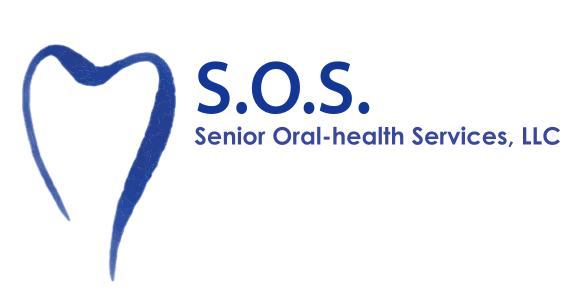We hope you enjoy the following article written by Senior Oral Health Services (SOS) for our Givens Home First community.
The Centers of Disease Control reports that in the past, most dependent adults entering a senior living community would have total or partial loss of their teeth. With the improvement of oral care in the past 50 years, residents are now aging with more of their natural teeth. This means that to maintain their oral care, there must be more effort put into preventing oral diseases such as dental decay and periodontal disease.
As plaque and food debris continues to build up on the teeth and tissues of the resident’s oral cavity, the risk increases for decay, gingivitis and periodontal disease. With these risks, a resident may also have difficulty eating their meals, socializing with other residents due to foul smelling breath and may notice a decline in their quality of life. In addition to weight loss and xerostomia, poor oral care can also put the resident’s overall health at risk. The risks include the residents developing aspiration pneumonia, if diabetic, poor control of glycemic levels, and increasing cardiovascular disease.
Many of the residents take several medications for their overall health. One of the major side effects of medications is dry mouth, also known as xerostomia. Xerostomia causes oral discomfort, interferes with chewing and swallowing functions and supports plaque formation. The reduction of these functions increases the risk for malnutrition and promotes risk of decay. Actively removing the plaque helps reduce this risk.
Studies show that oral hygienic condition could be improved by performing professional oral care at intervals of 1 week for 12 consecutive weeks, and the improved condition could be maintained when professional oral care was continued at intervals of 1 week thereafter. https://www.sosavl.com
Aspiration Pneumonia
Aspiration pneumonia is caused by foreign material entering the lungs. Most commonly, foreign particles consist of food debris, saliva, biofilm, or a combination of these. Healthy adults may also aspirate secretions during sleep, but with coughing as well as intact immune mechanisms, the airways are protected. With age and functional decline, these defense mechanisms become impaired, which renders fragile elders more vulnerable to developing aspiration pneumonia.
Diabetes Mellitus
Poor oral health can also affect the control of the blood glucose levels in diabetics. When diabetes is not controlled, high glucose levels in your saliva help harmful bacteria grow. These bacteria’s combine with food to form a soft, sticky film called plaque. Some types of plaque cause tooth decay or cavities. Other types of plaque cause gum disease and bad breath.
According to the American Diabetes Association, if someone tends to have high blood sugar levels or takes antibiotics often, they are more likely to experience thrush. Thrush is a fungal infection and makes white (or sometimes red) patches in areas of the mouth. These can get sore or turn into ulcers.
Cardiovascular Disease
Periodontal disease (infections of the structures around the teeth) and cardiovascular disease have the same risk factors including smoking, poor nutrition, and diabetes. Per the American Heart Association, inflammation caused by periodontal disease may be responsible for the connection between gum disease and heart disease. Even people who are highly prone to periodontal disease can prevent or control the disease with good oral care.
After learning the various ways that poor oral care can affect a resident’s oral and systemic health, and how easily it can be prevented, we had a responsibility to act. https://www.sosavl.com
Dry Mouth
As already mentioned, dry mouth has many negative effects on the oral cavity including discomfort, trouble chewing and swallowing and increased plaque formation.
Managing dry mouth includes taking regular sips of water throughout the day, minimizing carbs and sugars in the diet and reducing bacterial colonies with proper brushing and between teeth cleaning techniques. After each dental care session, we apply fluoride to reduce decay risk and remineralize the enamel. https://www.sosavl.com
S.O.S-Senior Oral-health Services
S.O.S-Senior Oral-health Services brings oral care specialists to residents living in senior living communities on a weekly basis to provide preventive oral health services. Weekly S.O.S. services include removal of harmful plaque bacteria using area specific brushes and interdental tools. Our goal is to improve the health and quality of life of each and every resident we see. https://www.sosavl.com
References
Ishikawa A, Yoneyama T, Hirota K, Miyake Y, Miyatake K. Professional oral
health care reduces the number of oropharyngeal bacteria. J Dent Res. 2008
Jun;87(6):594-8. PubMed PMID: 18502972.
Jablonski, Rita A. “Examining Oral Health In Nursing Home Residents.” Vol. 18, 1 Jan. 2010, pp. 21–26., www.prevmed.org/wp-content/uploads/2013/09/5-gen_examining_oral_health_in_nursing_home_residents.pdf.
Müller, F. “Oral Hygiene Reduces the Mortality from Aspiration Pneumonia in Frail Elders.” Journal of Dental Research 94.3 Suppl (2015): 14S–16S. PMC. Web. 30 July 2017
“Diabetes, Gum Disease, & Other Dental Problems.” National Institute of Diabetes and Digestive and Kidney Diseases. U.S. Department of Health and Human Services, 01 Sept. 2014. Web. 30 July 2017. <https://www.niddk.nih.gov/health-information/diabetes/overview/preventing-problems/gum-disease-dental-problems>.
“More on the Mouth.” American Diabetes Association. N.p., n.d. Web. 30 July 2017. <http://www.diabetes.org/living-with-diabetes/treatment-and-care/oral-health-and-hygiene/more-on-the-mouth.html?_ga=2.229316252.1839214288.1501443706-1443625844.1501443706%3Freferrer>.
Lockhart, P. B., A. F. Bolger, P. N. Papapanou, O. Osinbowale, M. Trevisan, M. E. Levison, K. A. Taubert, J. W. Newburger, H. L. Gornik, M. H. Gewitz, W. R. Wilson, S. C. Smith, and L. M. Baddour. “Periodontal Disease and Atherosclerotic Vascular Disease: Does the Evidence Support an Independent Association?: A Scientific Statement From the American Heart Association.” Circulation 125.20 (2012): 2520-544. Ahajournals.org. Web. 30 July 2017.









